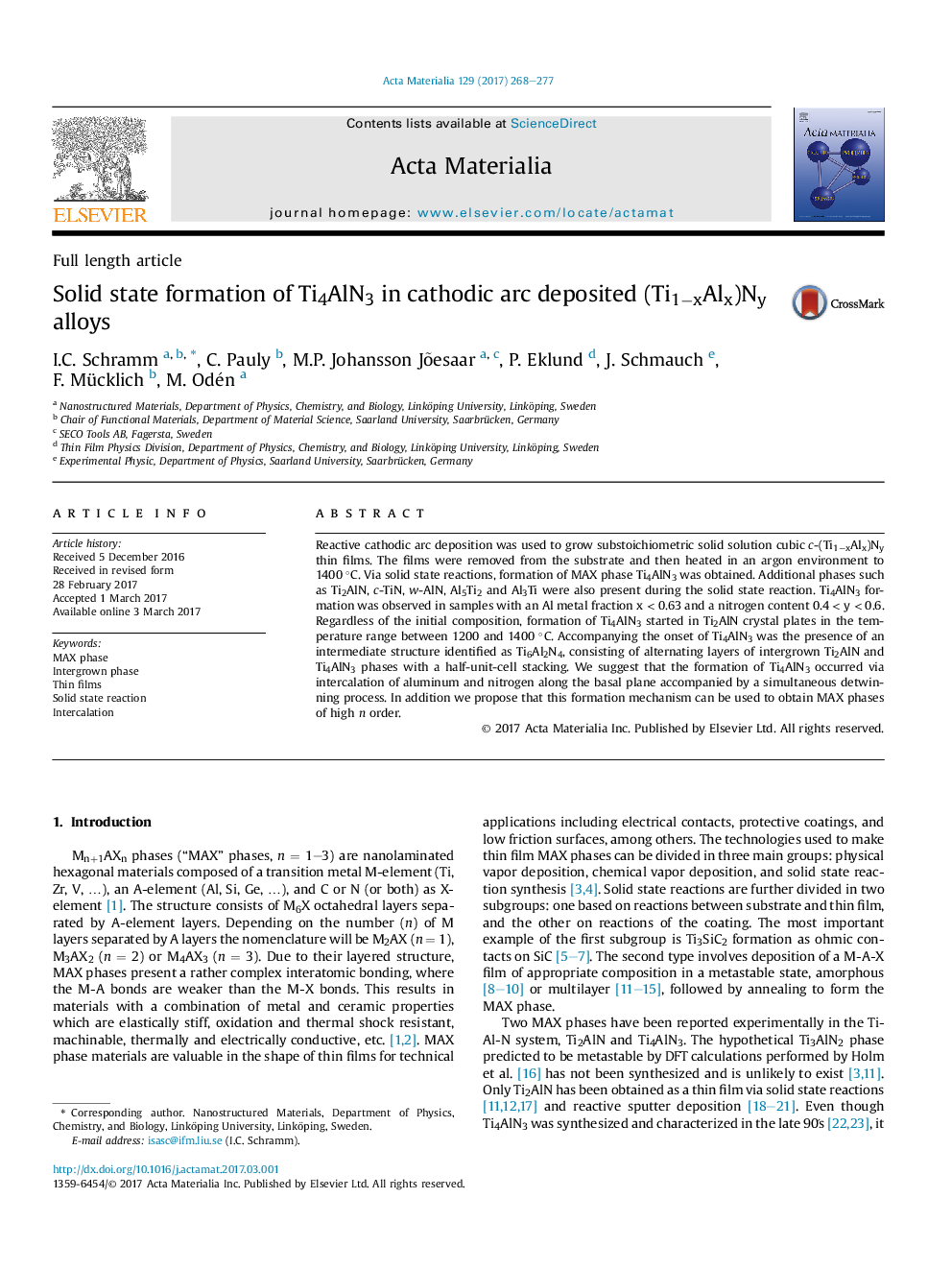| Article ID | Journal | Published Year | Pages | File Type |
|---|---|---|---|---|
| 5436223 | Acta Materialia | 2017 | 10 Pages |
Reactive cathodic arc deposition was used to grow substoichiometric solid solution cubic c-(Ti1âxAlx)Ny thin films. The films were removed from the substrate and then heated in an argon environment to 1400 °C. Via solid state reactions, formation of MAX phase Ti4AlN3 was obtained. Additional phases such as Ti2AlN, c-TiN, w-AlN, Al5Ti2 and Al3Ti were also present during the solid state reaction. Ti4AlN3 formation was observed in samples with an Al metal fraction x < 0.63 and a nitrogen content 0.4 < y < 0.6. Regardless of the initial composition, formation of Ti4AlN3 started in Ti2AlN crystal plates in the temperature range between 1200 and 1400 °C. Accompanying the onset of Ti4AlN3 was the presence of an intermediate structure identified as Ti6Al2N4, consisting of alternating layers of intergrown Ti2AlN and Ti4AlN3 phases with a half-unit-cell stacking. We suggest that the formation of Ti4AlN3 occurred via intercalation of aluminum and nitrogen along the basal plane accompanied by a simultaneous detwinning process. In addition we propose that this formation mechanism can be used to obtain MAX phases of high n order.
Graphical abstractDownload high-res image (397KB)Download full-size image
